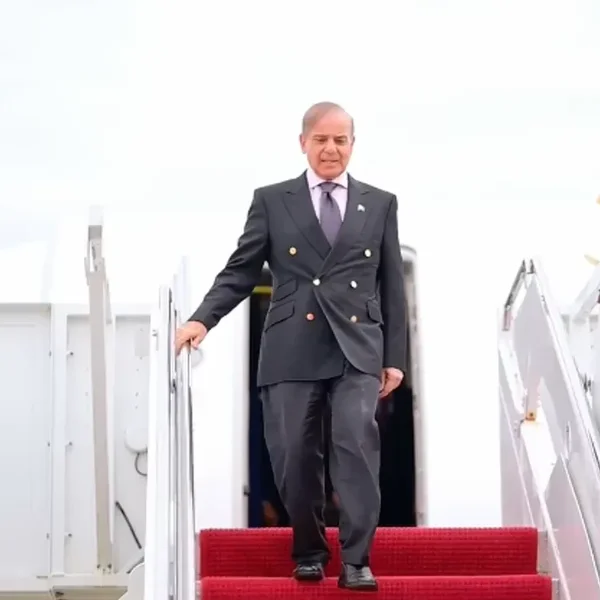US buyers demand price cuts from Pakistani textile exporters amid new tariffs
Bilwani suggests increasing imports of U.S. goods

Javed Mirza
Correspondent
Javed Iqbal Mirza is an experienced journalist with over a decade of expertise in business reporting, news analysis, and investigative journalism. His work spans breaking news, editorial pieces, and in-depth interviews.

Textile worker
Shutterstock
Major U.S. retailers are pressuring Pakistani textile exporters to slash prices by at least 50% of newly imposed tariffs, a move that could severely hurt the South Asian nation’s key export sector, industry leaders warned Monday.
Javed Bilwani, patron of the Pakistan Hosiery Manufacturers Association (PHMA), said American buyers are demanding steep discounts, asking exporters to absorb half of the additional tariff costs.
“If exporters comply, it will mean significant losses for our industry,” Bilwani told reporters after a meeting with government officials in Islamabad. He urged the Pakistani government to negotiate with the U.S. to mitigate the impact, warning that the textile sector—which accounts for more than half of Pakistan’s total exports—would suffer the most otherwise.
Bilwani suggested Pakistan could balance trade by increasing imports of U.S. goods or reducing exports to narrow the trade deficit. “We can import American products at competitive rates to offset the pressure,” he said.
One industrialist pointed out that major US buyers, including Walmart and Zara, are now demanding discounts that the local industry cannot afford to sustain.
He explained that when President Trump initially mentioned imposing tariffs on China and Vietnam, Pakistani exporters concentrated their efforts on capturing the US market. As a result, several European buyers, who had shifted to Pakistan due to unrest in Bangladesh, returned to Bangladesh.
New U.S. Tariffs Take Effect
The demands come as a 10% baseline tariff on U.S. imports took effect April 5, with an additional levy set to be imposed on April 9 targeting 60 countries, including Pakistan, China, Bangladesh, Vietnam and European Union nations.
At least 50 affected countries, including Vietnam, have already begun talks with the U.S. to negotiate lower tariffs. In response, Pakistan’s government has started consultations with textile industry stakeholders to assess the economic fallout and explore regional trade opportunities.
Pakistan’s Textile Sector at Risk
Pakistan is the third-largest supplier of cotton products to the U.S., holding a 14% market share, behind China (20%) and India (16%). The U.S. is Pakistan’s largest export destination, absorbing 18% of the country’s total exports. The textile sector alone contributes 54% of Pakistan’s exports, with 25% of those shipments going to the U.S., primarily in home textiles, knitwear and garments.
Shugufta Irshad, an analyst at JS Global Capital, noted that Pakistan has recently become the top importer of U.S. raw cotton due to falling American cotton prices and declining domestic production.
“Any tariff reduction on U.S. cotton imports would benefit both Pakistani textile exporters and U.S. farmers,” Irshad said.
Competitive Shifts in Global Textile Trade
Analysts say the new U.S. tariffs could reshape global textile trade dynamics. While Pakistan faces a 29% tariff—lower than China (54%), Vietnam (44%) and Bangladesh (37%)—it remains at a disadvantage compared to India (26%) and Turkey (10%).
Recent shifts in sourcing patterns, driven by political unrest in Bangladesh and U.S. restrictions on Chinese goods, have opened opportunities for Pakistan, India and Vietnam to expand their share in the U.S. market for value-added textiles. However, the latest tariff pressures threaten to undermine those gains.
With U.S. buyers pushing for price cuts, Pakistani exporters fear losing hard-won market share if they cannot sustain the demanded discounts. Industry leaders are now calling for urgent government intervention to secure favorable trade terms before the additional tariffs take full effect.
Analysts emphasize that for Pakistan to capture the displaced share of US exports from high-tariff trading partners like Bangladesh, China, and Vietnam—and to stay competitive with India and Turkey—it must focus on key cost-saving measures.
These include sourcing cheaper raw cotton, whether domestically or from the US, integrating operations from semi-finished products to ready-made garments, and improving efficiency in fuel and power costs.










Comments
See what people are discussing